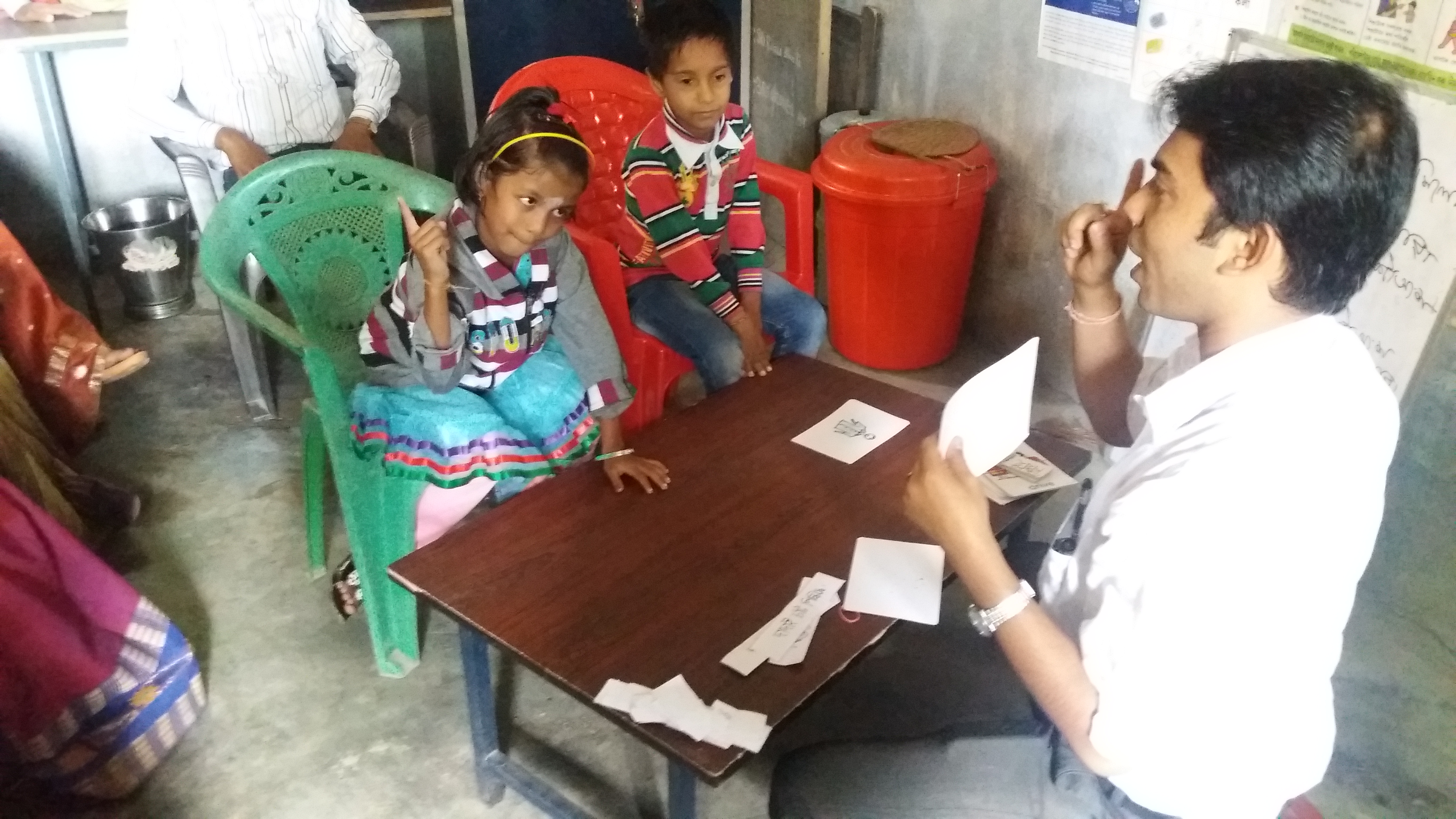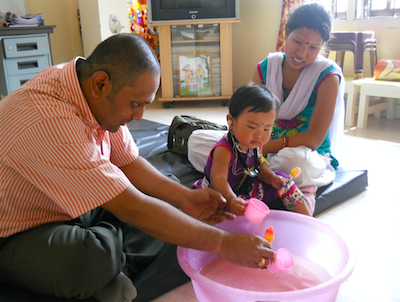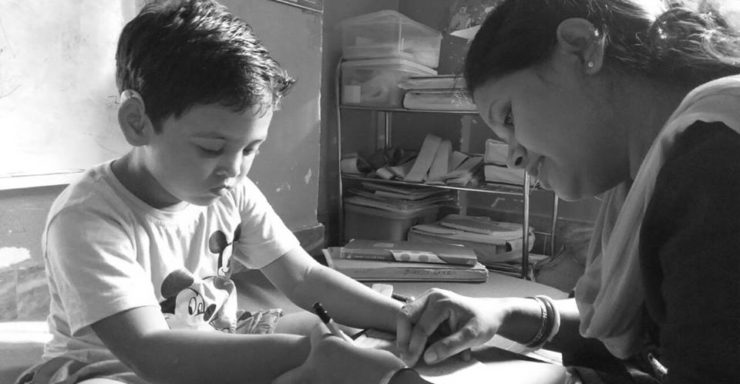The SRC is a space to educate and empower deaf children and their parents to learn and comprehend language and have meaningful conversations between themselves and the world around them.
Here parents are not only trained to help their young deaf child with the challenges they face with hearing, communication and literacy but also, to accept the child’s differences, guide the child through their formative school years and become agents of change by influencing policy making authorities and the Government.
Sadhan Resource Centre
Based on our experience over the last 12 years, we have developed a model to effectively deliver our technical expertise. We call it the Sadhan Centre.
Here is how it works.
1Conduct a study to choose the right area.
2Find a space. Could be an apartment, a school room or a cowshed
3Send out Community Mobilizers who identify deaf children and familes.
4Equip the space with all the right teaching material.
5Hire the best technically qualified teacher.
6Teach!
VAANI reaches the deaf children and their families directly through Sadhan Centres – a model best practice demonstration center extending early intervention services for the development of deaf children and infants in developing communication, language and literacy skills and measuring their impact.
- Provide information on issues around childhood deafness to families of deaf children and professionals who work with deaf children.
- Provide assessment facilities for early identification of deafness in babies/children under 5 years of age.
- Provide information and appropriate support for identified deaf children.
- Provide additional educational support to school-going deaf children.
- Provide a space for family members of deaf children to meet and share experiences.

One of the main activities in the Sadhan Centre is the Individual Education Plan (IEP) Sessions.
Individual Education Plan (IEP) for Identified and referred deaf children are prepared for each one after an assessment of the child’s needs. This is done in the presence of the guardian – usually the mother.
Each child visits the resource center once or twice a week depending on the needs that have been listed.
To monitor the progress of these children records maintained are:
- Attendance registers to monitor their schedules
- The IEP record of individual children to record progress is updated
- Family follow-up book
The resource teacher and the mother go through the follow-up book which also has a record of the homework that the mother is supposed to do with the child. A typical session with a parent and child goes on for 1 and a half hours – 15 minutes on communication exercises, 1 hour on working with textbooks to supplement school studies for the child and the last fifteen minutes to discuss the plan for activities till the next visit.
With enough room for changes to the IEP and techniques used for working with the child, depending on the child’s grasping ability and frequency of attendance, the progress is constantly monitored by both the mother and the teacher. This is participatory monitoring at its best, and the system really ensures the best services for the young deaf child. Along with indicators along the way to measure success, the short-term and long-term goals are also spelled out and everybody involved is aware of the status of the progress at all times.

